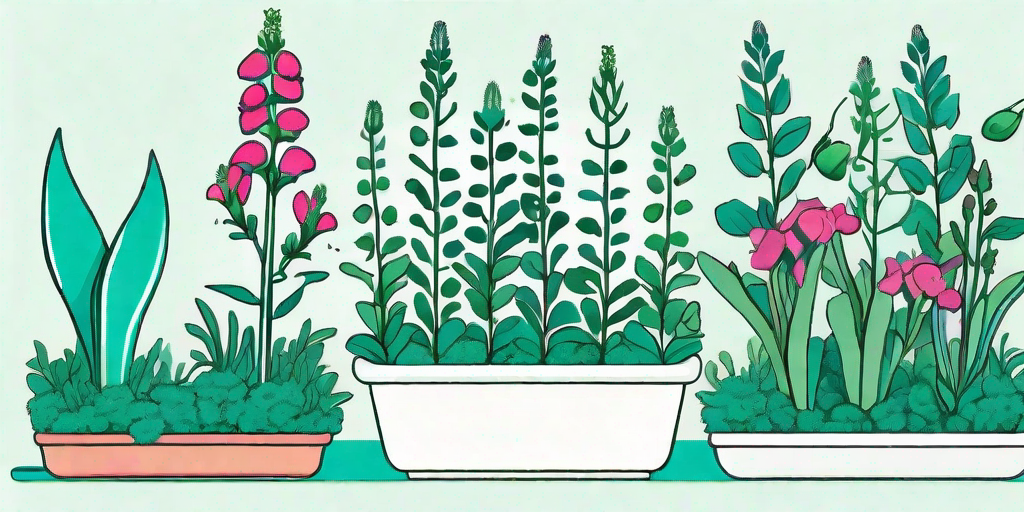
Snap dragons, or Antirrhinum majus if you want to get all Latin about it, are a gardener's delight. With their vibrant hues and distinctive dragon-shaped blossoms, they add a touch of whimsy and color to any garden. But, like any diva, they demand a bit of extra care and attention. So, buckle up, green thumbs, as we delve into the world of snap dragons and learn how to grow these beauties from seedlings.
Understanding Your Snap Dragons
The Basics
First things first, let's get to know our subject. Snap dragons are a genus of flowering plants native to the rocky areas of Europe, the United States, and North Africa. They come in a variety of colors, from the classic red and yellow to the more exotic purple and white. And, of course, they're known for their unique, dragon-shaped blossoms that 'snap' open and closed when squeezed - hence the name.
But it's not all fun and games with these plants. Snap dragons are known for their hardiness and can withstand a variety of conditions. They prefer full sun but can tolerate partial shade, and while they love well-drained soil, they're not picky about the type. So, whether you're a gardening novice or a seasoned pro, snap dragons are a great addition to your garden.
The Lifecycle
Like all plants, snap dragons have a lifecycle, and understanding this lifecycle is key to successfully growing them. Snap dragons are typically grown as annuals, meaning they complete their lifecycle in one year. They sprout in the spring, bloom in the summer, and die in the fall. However, in milder climates, they can be grown as perennials, where they'll bloom year after year.
When growing snap dragons from seedlings, timing is everything. You'll want to start your seedlings indoors about 8-10 weeks before the last expected frost. This gives them plenty of time to mature before they're transplanted outdoors. But more on that later.
How to Grow Snap Dragons from Seedlings
Starting Your Seedlings
Now, onto the fun part - starting your seedlings. You'll need a few things to get started: snap dragon seeds, a seed tray or pots, seed starting mix, and a bit of patience. First, fill your tray or pots with the seed starting mix. Then, place your seeds on top of the mix and lightly press them in. Remember, snap dragon seeds need light to germinate, so don't bury them too deep.
Next, water your seeds. But be gentle! You don't want to wash away your seeds or compact the soil. A spray bottle works great for this. Finally, place your tray or pots in a warm, sunny spot and wait. With the right conditions, your seeds should sprout in about 10-14 days.
Transplanting Your Seedlings
Once your seedlings have sprouted and grown a few true leaves (those are the ones that look like mini snap dragon leaves), it's time to transplant them outdoors. Choose a spot in your garden that gets plenty of sun and has well-drained soil. Then, dig a hole about twice the size of your seedling's root ball and place your seedling in the hole. Backfill the hole with soil, firming it gently around the base of the plant.
After transplanting, give your snap dragons a good watering. But be careful not to overwater - snap dragons don't like wet feet! From there, it's just a matter of regular watering, occasional feeding, and plenty of sun. Before you know it, you'll have a garden full of snap dragon beauties.
Common Snap Dragon Problems and How to Solve Them
Pests and Diseases
Like any plant, snap dragons can be susceptible to pests and diseases. Aphids, caterpillars, and rust are common problems. To combat these, regular inspection of your plants is key. If you notice any signs of pests or disease, act quickly. Neem oil, insecticidal soap, or a good old-fashioned blast of water can help keep pests at bay. For diseases, a fungicide may be necessary.
Remember, prevention is better than cure. Keeping your plants healthy and stress-free is the best way to avoid problems. This means regular watering, feeding, and pruning, as well as good air circulation around your plants.
Environmental Issues
Snap dragons can also suffer from environmental issues, such as poor soil, lack of sun, or too much water. If your snap dragons are looking a bit sad, consider their environment. Are they getting enough sun? Is their soil well-drained? Are they being overwatered? A bit of detective work can often solve the problem.
And remember, snap dragons are hardy plants. They can bounce back from a lot, so don't give up on them too easily!
FAQs
Why aren't my snap dragons blooming?
There could be a few reasons for this. It could be that they're not getting enough sun, or they're being overwatered. It could also be that they're not getting enough nutrients. Try moving them to a sunnier spot, cutting back on watering, or feeding them with a balanced fertilizer.
Can I grow snap dragons in pots?
Absolutely! Snap dragons are great container plants. Just make sure your pot has good drainage and gets plenty of sun.
Do snap dragons attract bees?
Yes, snap dragons are a favorite of bees and other pollinators. So, if you're looking to attract these beneficial insects to your garden, snap dragons are a great choice.
Conclusion
And there you have it - everything you need to know about growing snap dragons from seedlings. With a bit of care and attention, these vibrant, whimsical plants can be a stunning addition to your garden. So why not give it a go? After all, who wouldn't want a garden full of dragons?















